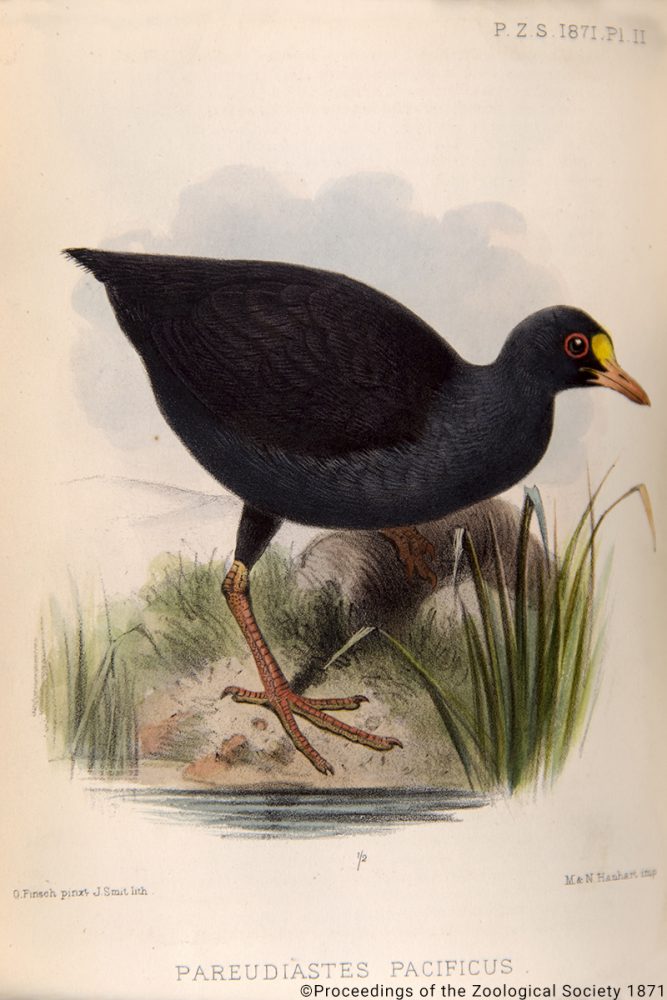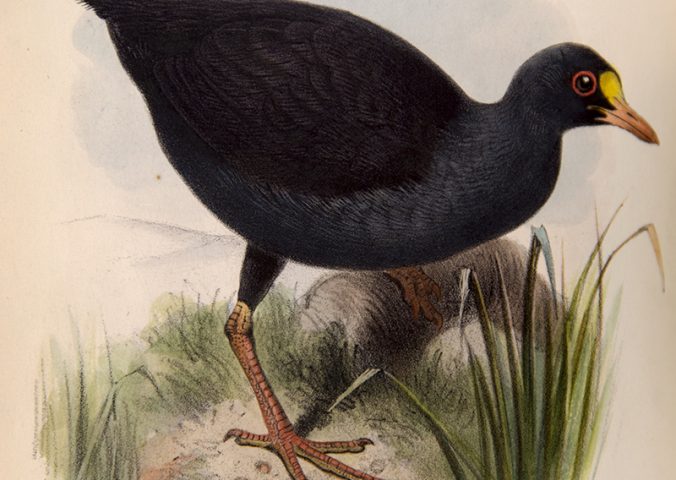About
The Samoan Moorhen is only known from three specimens and an egg collected between 1869 and 1873.
This species is part of the Rallidae bird family, which diverged from all other birds 38.3 million years ago, during the Paleogene period. There has been no definite record of this bird since 1873, and the results of recent targeted surveys have concluded that this species is likely extinct. This species is likely to have been eradicated by introduced cats, rats, pigs and dogs. Hunting may have also been a factor as apparently it was a favoured food of the human population. Slash-and burn methods for cultivation remains a threat for the remaining areas of upland forest on Savai`i, as farmers used forestry roads of heavily logged lowland forests to gain access to previously inaccessible land. An intensive biodiversity survey of Savai`i was taken place as in May 2012 but this failed to find the species. It is plausible this species may remain in a tiny population, and therefore it is listed as Critically Endangered. The eradication of introduced species may help this species increase in population if it still exists.
- Order: Gruiformes
- Family: Rallidae
- Population: <50
- Trend: unknown
- Size: 25cm
EDGE Score
Distribution
This species is known from Savai`I, Samoa.
Habitat and Ecology
This species lives in primary montane forest and probably feeds on invertebrates, including insects. It may dig or live in burrows. One nest was found on the ground constructed of a few twigs and grass. They have exceptionally large eyes thus may be nocturnal.

